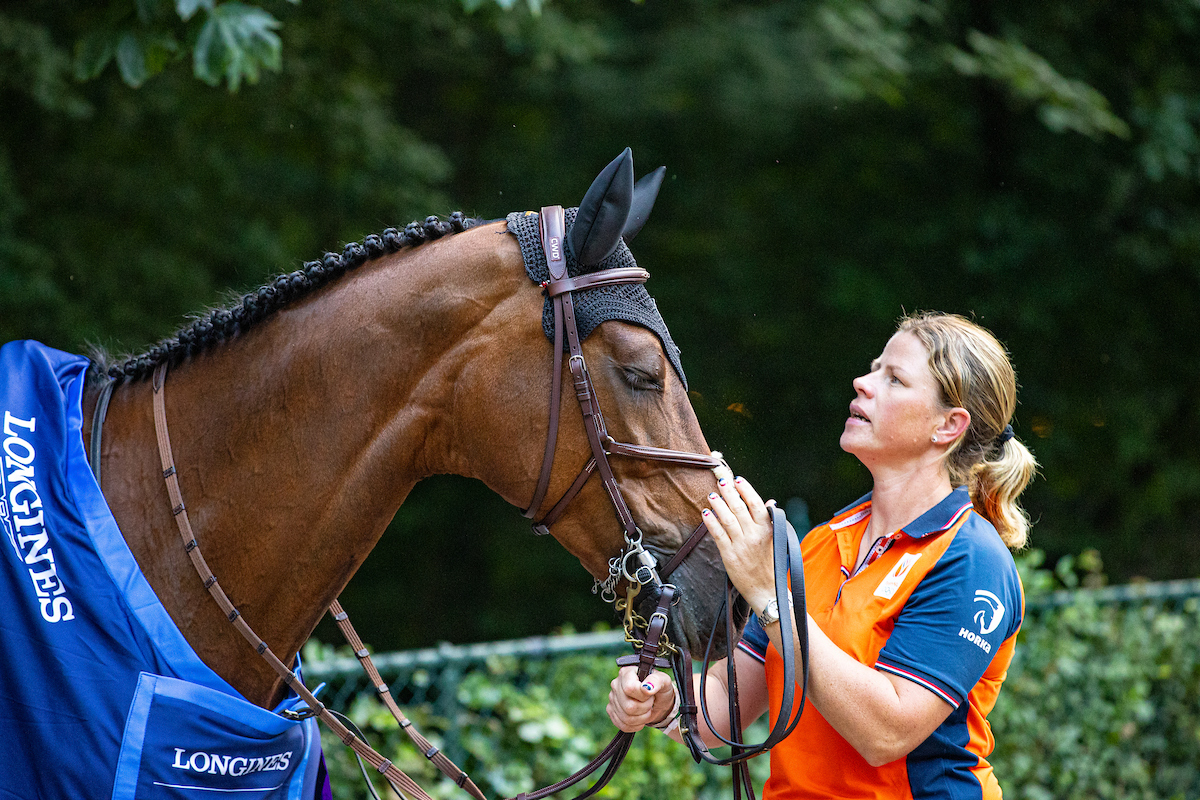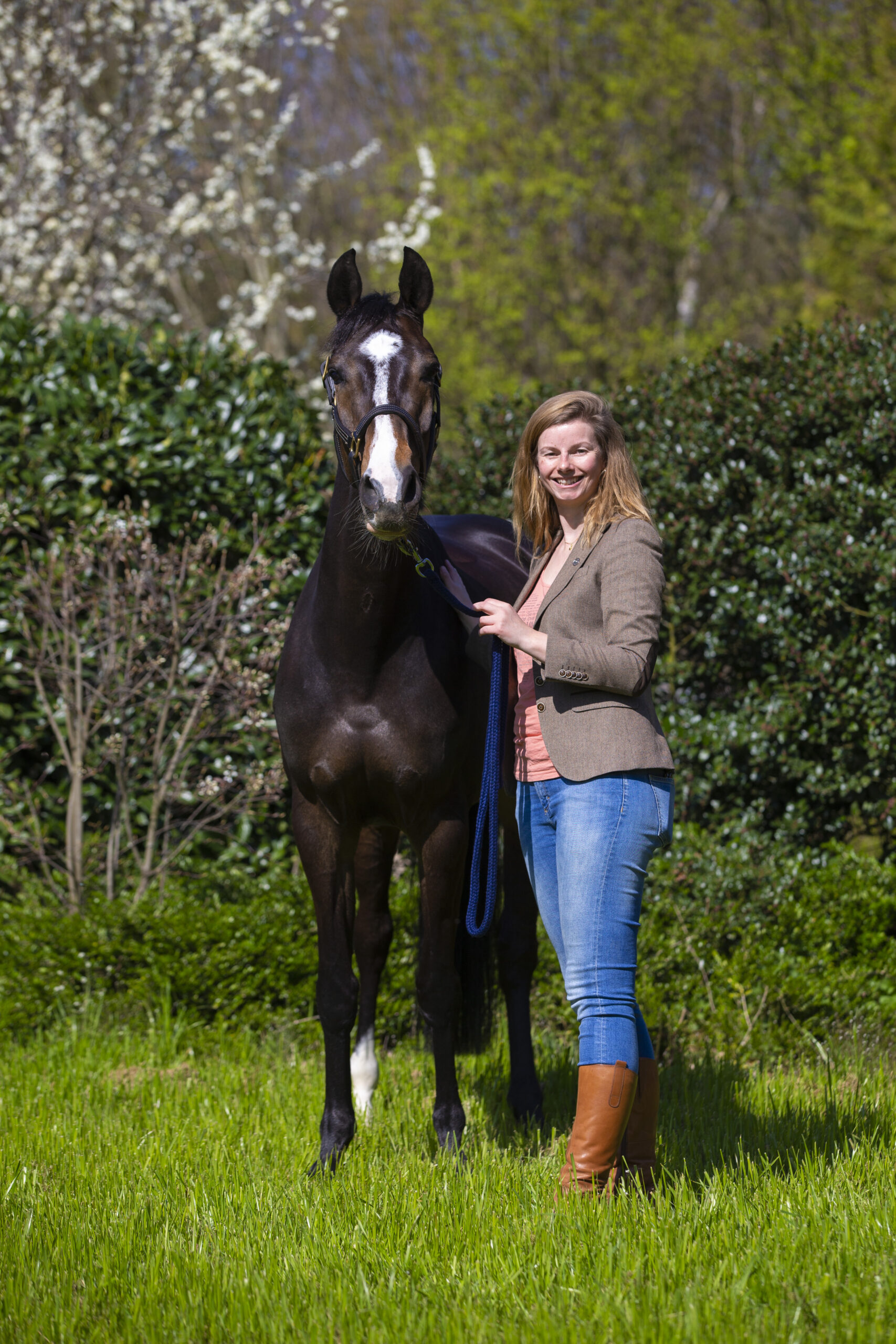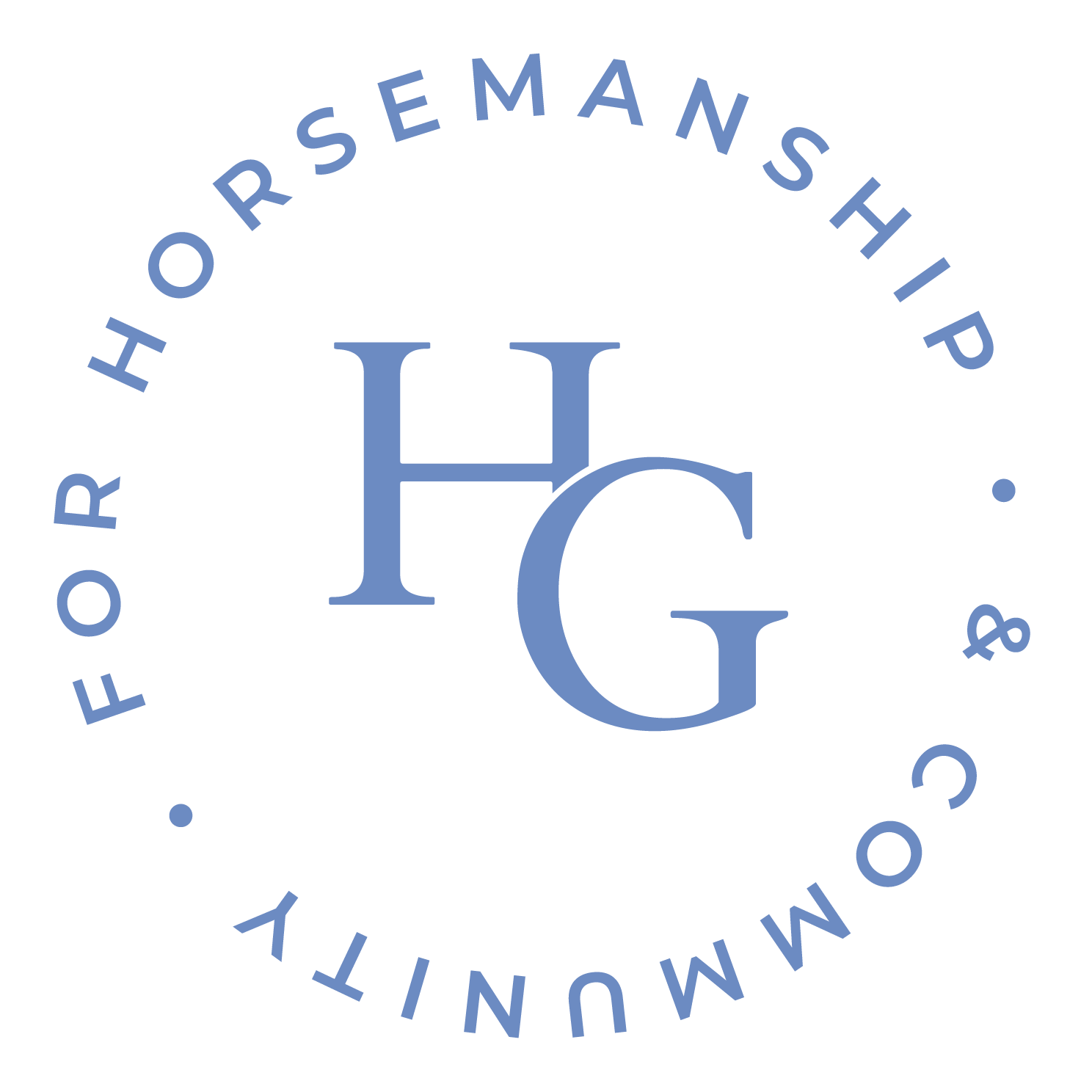Madeleine Broek (40) is an equestrian professional renowned for her exceptional skills as a groom. For almost 20 years, she has been an integral part of Dutch showjumper Marc Houtzager’s team, earning accolades for her unwavering dedication to horse welfare and stable management.
How long have you been working for Marc Houtzager, and how did you first join his team?
That’s actually quite a funny story. When I was about 8 or 9 years old and riding ponies at the riding school, there was a woman who used to go to competitions with Marc. With my little whip and my rain boots, I asked her, “Can I come along to a show one day?” Marc is from the same area as me, so eventually I got to tag along with him a few times. I’ve actually known him for about 30 years now.
Later, when I was around 12 or 13, I went along again, but after that, school took priority. In the meantime, I was riding quite a bit myself, mainly young horses. We had two or three horses at home but no more than that. After finishing school, I started working in the horse industry as a rider.
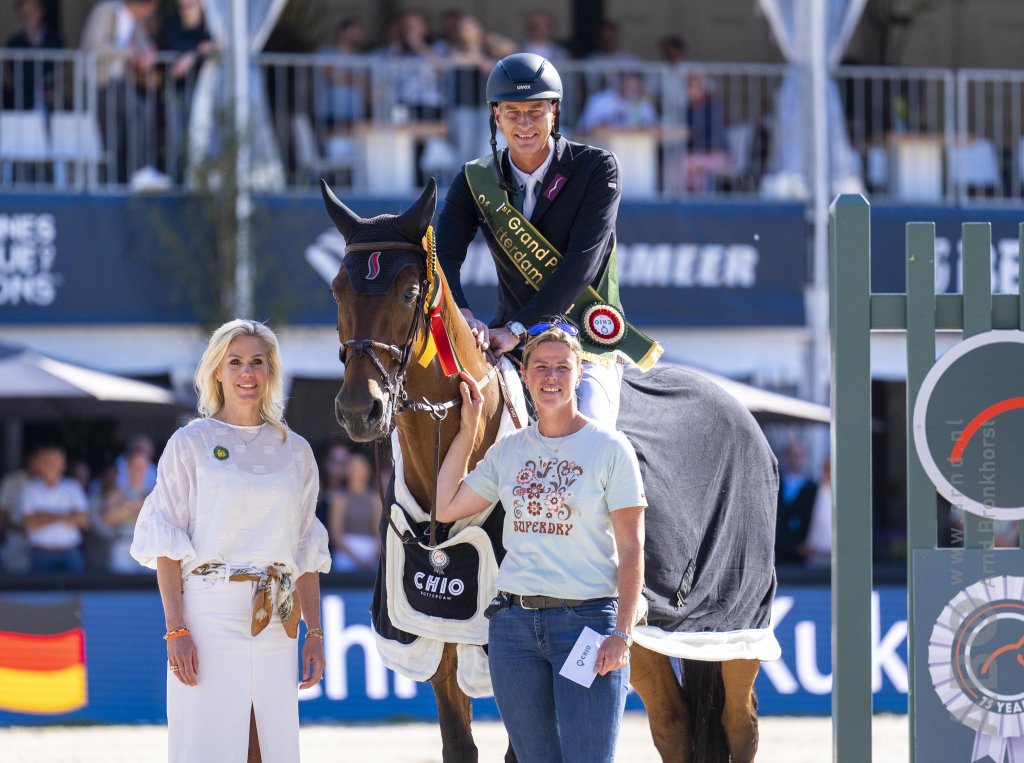
At one point, I ended up working for Willy van der Ham because he needed someone, and I was in between jobs. He had clients in the U.S., so I spent three months there. My father did business with Marc from time to time, and he told him, “If Madeleine comes back from America and still doesn’t have a job, she can work for me.” And that’s how I eventually started working for Marc. I initially started riding at home while they were away at competitions. At some point, I asked if I could come along to a show.
Many grooms change riders frequently, but you have been with Marc for a long time. What has kept you so loyal to his team?
What I love most is that Marc comes from my area. I really appreciate his approach to working with horses — buying young horses and developing them into grand prix competitors himself. He doesn’t buy horses that are already jumping at 1.50m; instead, he invests in 5- or 6-year-olds and brings them up through the levels. For example, he bought [Sterrehof’s] Tamino as a 4-year-old and trained him all the way to the top. [Tamino went to the World Equestrian Games in Kentucky in 2010 and to the Olympics in London 2012]. The same happened with [Sterrehof’s] Calimero. I think that’s incredible because, as a groom, you get to witness the entire development of a horse. You experience the great moments, but also the tougher ones, and that’s just part of the journey.
What do you find important in the collaboration between a groom and a rider?
Because we’ve been working together for so long, we know exactly what to expect from each other. Marc doesn’t need to say much, and neither do I. In the warm-up arena, a glance or a small gesture is often enough. That level of teamwork is really important to me.
In your opinion, what should employers do to retain grooms for a longer period?
Oh, that’s a tough question. Grooms are really a dying breed. Nowadays, you almost need two people to do what used to be a full-time job for one. The way we grew up in this industry just doesn’t exist anymore. When I used to go to shows with Marc, it never even crossed my mind to ask for money – we did it because we loved it. But that’s no longer the case.
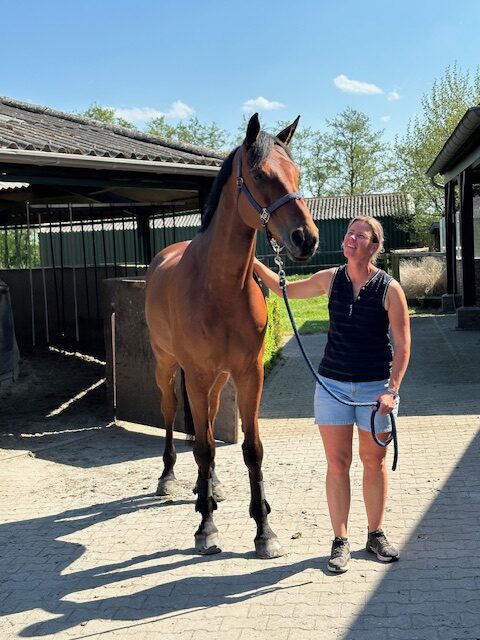
I feel like there are simply fewer people willing to put in the work. You really need a deep passion for this job, otherwise, you won’t last. That makes it difficult to say what employers should do. If someone you hire isn’t truly willing to do the work, what can you do as an employer? It’s a tough issue, and for us, it’s getting harder and harder to find good colleagues. We do this because of our passion, but that same drive seems to be disappearing in the younger generation.
What has been the most special moment in your career so far?
Oh, am I only allowed to pick one? The first moment that comes to mind is a special competition in Amsterdam. I don’t remember exactly which year it was, but it was [Sterrehof’s] Opium’s last show. I believe it was on a Saturday evening, and he jumped clear in a big class. The plan was for him to officially retire from the sport on Sunday after the grand prix.
But the fact that he still jumped a perfect round in Amsterdam… that was incredible. I was so happy and emotional — I was crying when Marc came out of the ring. He saw me, and I could tell he was struggling with it too. A few riders came up to Marc and told him, “You shouldn’t do the jump-off. This is such a special moment. It doesn’t get any better than this.” And in the end, we decided that he wouldn’t do the jump-off.
That’s the first moment that comes to mind. Of course, there are many more, but this one is truly special to me.
Do you have a favorite horse with whom you share a special bond? What made that horse so special to you?
I think it has to be Opium again. At first, I was actually scared of him. He used to mess with me, as stallions often do. But over time, we developed mutual respect, and after that, I could do anything with him. It was amazing because he had such a unique personality.
I can’t quite explain what made Opium so special, but he always challenged you. During the vet check, for example, he would just stand in front of me as if to say, “Figure it out yourself.” In the beginning, I didn’t even know how to handle him properly, and I struggled to get him to stand next to me. I had no experience working with stallions, so it took some time to adjust.
Opium actually arrived at Marc’s stable a month before I did, which makes it even more special. And of course, the 2008 Olympic Games in Hong Kong were an unforgettable experience with him. Finishing seventh there was truly something special.
What does a typical workday look like for you, both at home and at competitions?
At the stable, we start at 7:30, and at shows, we usually begin feeding between 7 and 7:30. It depends on when the first class starts and how many horses we have with us. Here in Den Bosch [the Netherlands], I only have two horses, but when we were in Oliva [Spain] for three weeks, I had five, which is quite a difference.
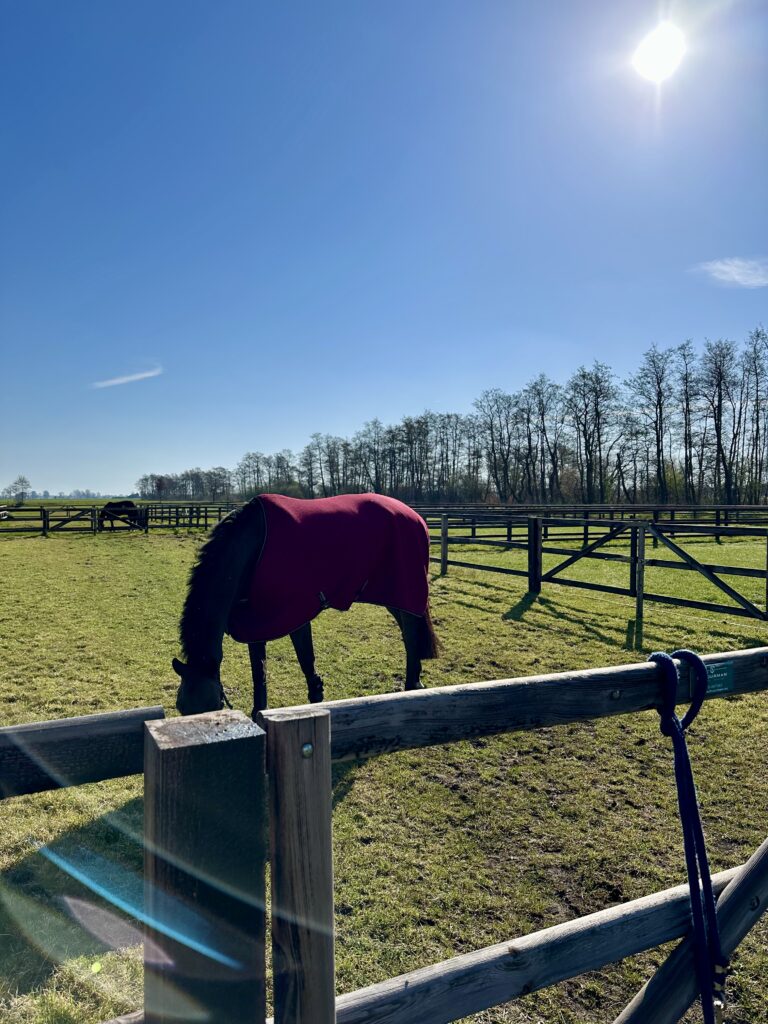
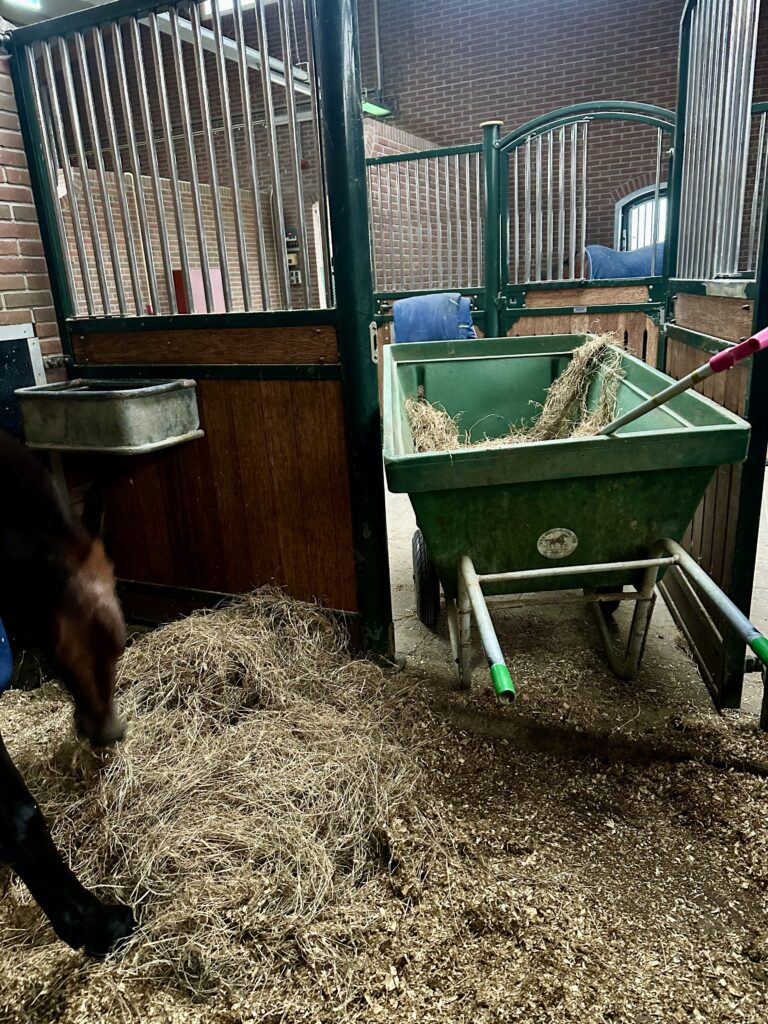
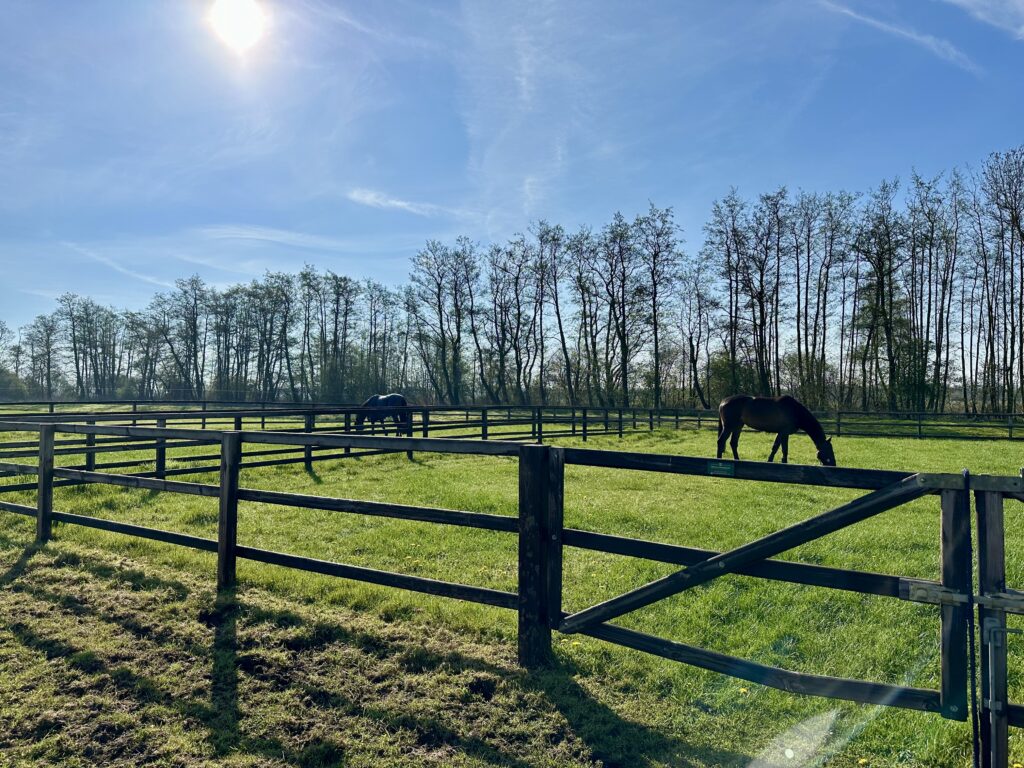
Both at home and at competitions, I start by feeding hay. While the horses are eating their hay, I muck out the stalls and refresh the water at shows. After that, they get their concentrate feed. We use three types of feed: pellets, a muesli mix for horses that need more energy and another muesli mix for horses with higher energy demands.
At home, we have coffee after mucking out because that’s when Marc’s children are taken to school. At competitions, the horses are walked or lunged first, while Marc starts riding his first horse at home.
You work with both young and older horses. How does grooming differ between the two?
We have quite a diverse mix of ages in the stable. Marc also breeds his own horses, and right now, we have a few 3-year-olds that have just been broken in. Marc doesn’t ride them yet. We have quite a few horses in the stable that are very well-behaved and easy to handle, which sometimes makes it easier to move on to a 4-year-old. In hindsight, you might think you should have been a bit more cautious. But overall, the process goes well.
When it comes to managing older horses, they are taken out of their stalls more frequently. There is no difference in feeding between young and older horses. We also hardly use any supplements, except for electrolytes in the summer when they sweat a lot.
For turnout, we have seven grass paddocks and two sand paddocks. Right now, the grass is difficult to use because the ground is quite wet. The horses go outside three times a day: in the walker, during riding or lunging and in the paddock. Once they can go on the grass again, they will be out for around two hours a day.
Are there any specific grooming products or techniques you swear by?
I really can’t stand it when the mane sticks out in all directions. If it gets too wild, I braid it half-way and leave it in for a few days. Then I take the braids out and check if it needs to be done again or if the mane stays in place on its own.
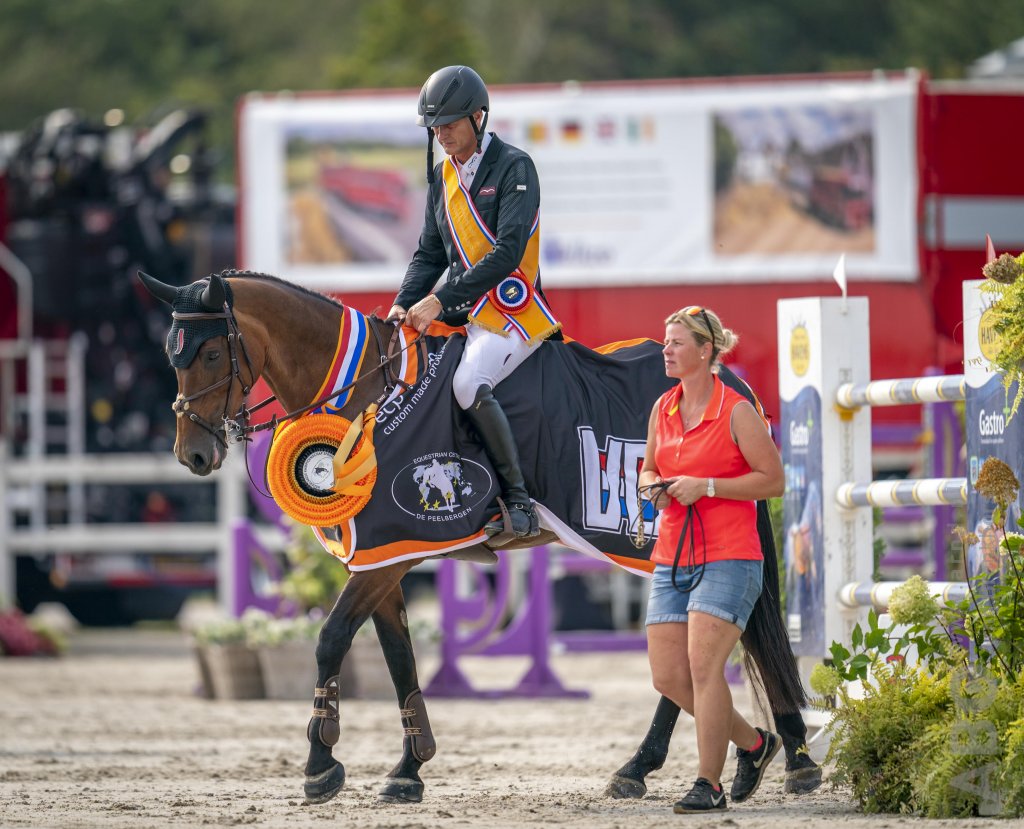
Other than that, we keep things very basic when it comes to grooming. I don’t use any special grooming products or tricks. We do brush the tails every day. Some horses need their tails washed more often. If I notice the tail is too tangled, I wash it, apply some shine spray and then it’s easy to brush through again.
Everyone has their own opinion on this, but I believe that if you rarely brush a tail, it ends up with more knots, and you actually pull out more hair in the long run.
Being a groom can be physically and mentally demanding. How do you keep yourself fit and motivated?
By running. I have to say, a few years ago, I was ten kilos heavier. I first focused on losing weight and then started running. I had help from a dietitian who understands what it means to be a groom. A standard diet wouldn’t have worked for me — I wouldn’t have been able to keep up with my job. She understood exactly what I needed. If you work with someone who has no idea what your job entails, it’s almost impossible.
What I love about running is that it clears my mind. I just run without thinking. I even did it in Oliva. I was there for three weeks with five horses, walking an average of 25,000 steps per day, but I still went running three times a week. I would do a five-kilometer loop. I have to say, ever since I started, I feel so much better.
In your opinion, what qualities make a good groom?
Passion, perseverance and hard work. There aren’t many people left who can or want to do things the way we started. You can’t just think at 5 o’clock, “Well, the day is over.” That’s not how it works in this job. You really need to have the passion to keep going.
In Oliva, we started at 6:30 in the morning and didn’t finish until 6:30 in the evening. So you need the right mindset and a strong motivation. On the other hand, if you never try, you’ll never know if it’s for you. You can’t predict in advance how you’ll feel about it. So, give it a try and stick with it for a while.
Stoeterij Sterrehof
Without owners and sponsors, the equestrian sport would look very different. Ivo and Ellen Campagne from Stoeterij Sterrehof have played a significant role in Marc Houtzager’s success.
“Ivo and Ellen Campagne from Sterrehof have been a part of my life for as long as I have been a groom for Marc” said Madeleine Broek. “Their first horse was Opium, which they eventually fully owned. That was the start of the collaboration between Marc, Julia [Marc’s wife], Ellen and Ivo.
“Ellen comes to the stables every day with apples for the horses and a banana for Dante because he prefers a banana. Sterrehof remains closely involved with us. They share our vision for horses and have the same mindset and feeling for the profession, which is truly valuable.
What I also appreciate about Ivo and Ellen is that they genuinely take an interest in what I do. When Opium passed away, Ellen personally called me to offer her condolences. That meant a lot to me because they didn’t have to do that. It felt like a form of recognition.”
Featured photo courtesy of DigiShots.
